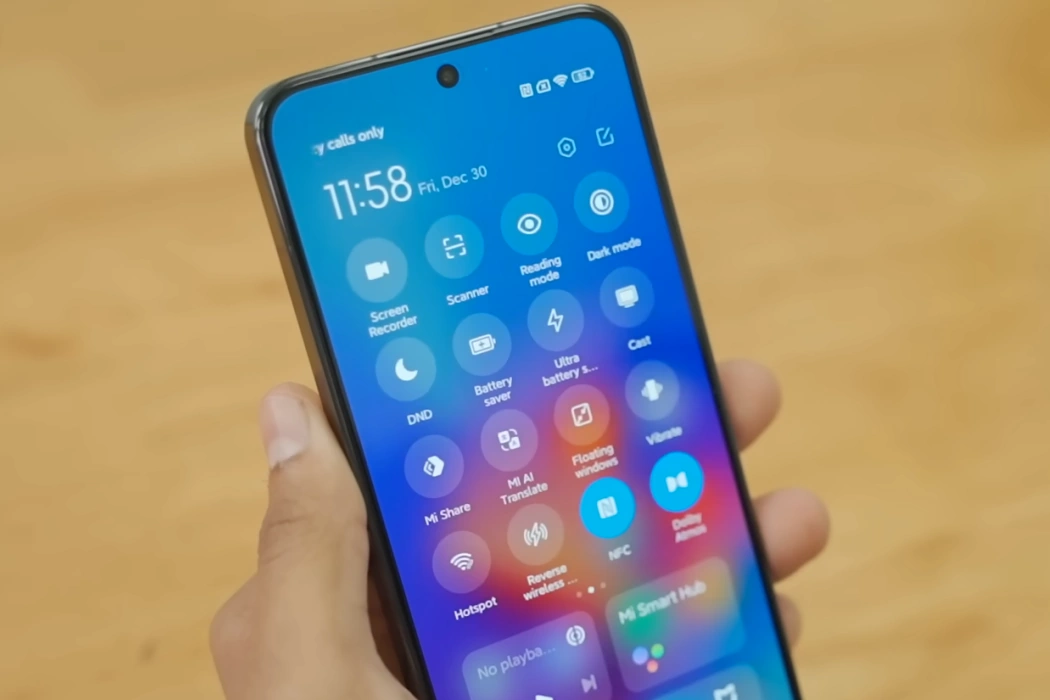The Redmi Note 13 features a 4500 mAh battery, while the Redmi Note 13 Pro comes with a slightly larger 4820 mAh battery. Despite their impressive battery capacities, some users might face battery drain issues due to various reasons, such as software glitches or misconfigured settings.
In this guide, we’ll provide you with a step-by-step approach to troubleshoot and fix Redmi Note 13 and 13 Pro battery drain issue, ensuring that you can make the most of your device’s battery life.
Turn On Battery Saver & Ultra Battery Saver
Battery saver and ultra battery saver modes help reduce power consumption by limiting background activities, disabling sync, and adjusting other settings.
- Open the Settings app.
- Tap on Battery.
- Tap the cog icon at the top right corner.
- Tap on Battery saver and Ultra battery saver options and toggle on as needed.
Turn On Dark Mode
Dark mode can help save battery life on devices with AMOLED displays, such as the Redmi Note 13 and 13 Pro.
- Open the Settings app.
- Tap on Display.
- Select Dark mode to apply the dark color scheme.
Turn Off Always-On Display
Always-on display consumes battery by keeping a part of the screen always lit. To disable this feature, follow these steps:
- Open the Settings app.
- Tap on Always-on display & Lock screen.
- Toggle off Always-on display.
Lower Screen Refresh Rate to 60Hz
Higher refresh rates consume more battery. Reducing it to 60Hz can save battery life.
- Open the Settings app.
- Tap on Display.
- Tap on Refresh rate.
- Tap Custom.
- Select and set refresh rate to 60Hz.
Turn Off Location Services
Location services can be a significant battery drain. Turn them off when not in use.
- Open the Settings app.
- Tap on Location.
- Toggle off Location access.
Turn Off Haptic Feedback
Haptic feedback or vibration can consume battery life, especially if you use your phone a lot.
- Open the Settings app.
- Tap on Sound & touch.
- Swipe left to Touch panel.
- Toggle off Haptic feedback.
Disable Locked screen notifications
Waking the screen for each notification can drain the battery. You can choose to disable showing notifications when the screen is locked. Here’s how to do it:
- Open the Settings app.
- Tap on Notifications & control center.
- Tap on Lock screen notifications.
- Tap on Format at the top and select Don’t show Locked screen notifications.
Lock Screen During Inactivity
Reducing screen timeout can save battery life by turning off the screen during inactivity.
- Open the Settings app.
- Tap on Always-on display & Lock screen.
- Tap on Sleep.
- Select a shorter duration, such as 15 or 30 seconds.
Don’t Allow Apps to Auto-start
Preventing unnecessary apps from auto-starting can save battery life. Here’s how to do it:
- Open Settings.
- Tap on Apps.
- Select Permissions.
- Tap on the app you want to manage, and then toggle off Auto-start.
Turn off Mobile Data When Device is Locked
Disabling mobile data while your device is locked can help save battery as it prevents apps from consuming data and power in the background.
- Open the Settings app.
- Tap on Battery.
- Tap the cog icon on the top right corner.
- Tap on Turn off mobile data when device is locked and select the duration (1 min, 5 mins, 10 mins, or 30 mins) after how long the mobile data should turn off.
Clear Cache When Device is Locked
Clearing cache when the device is locked can also save battery life as it prevents apps from storing temporary data that can use up power.
- Open the Settings app.
- Tap on Battery.
- Tap the cog icon on the top right corner.
- Tap on Clear cache when device is locked and select the duration (1 min, 5 mins, 10 mins, or 30 mins) after how long the cache will be cleared.

